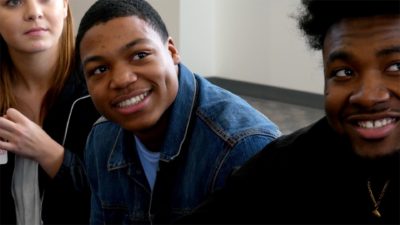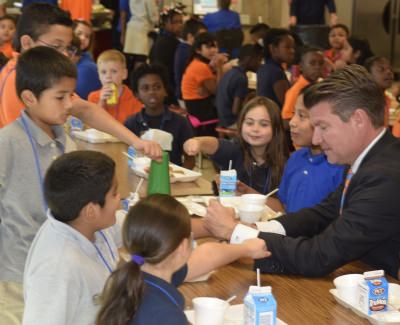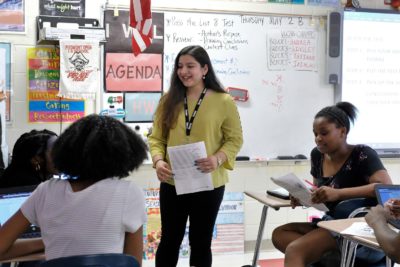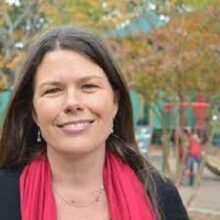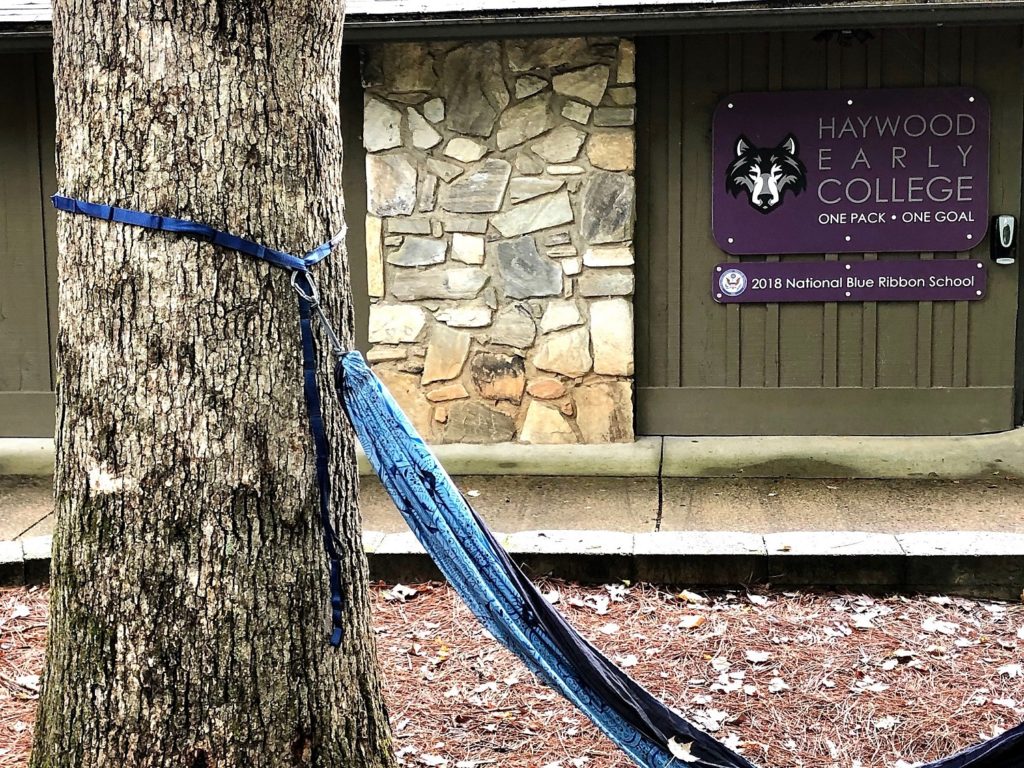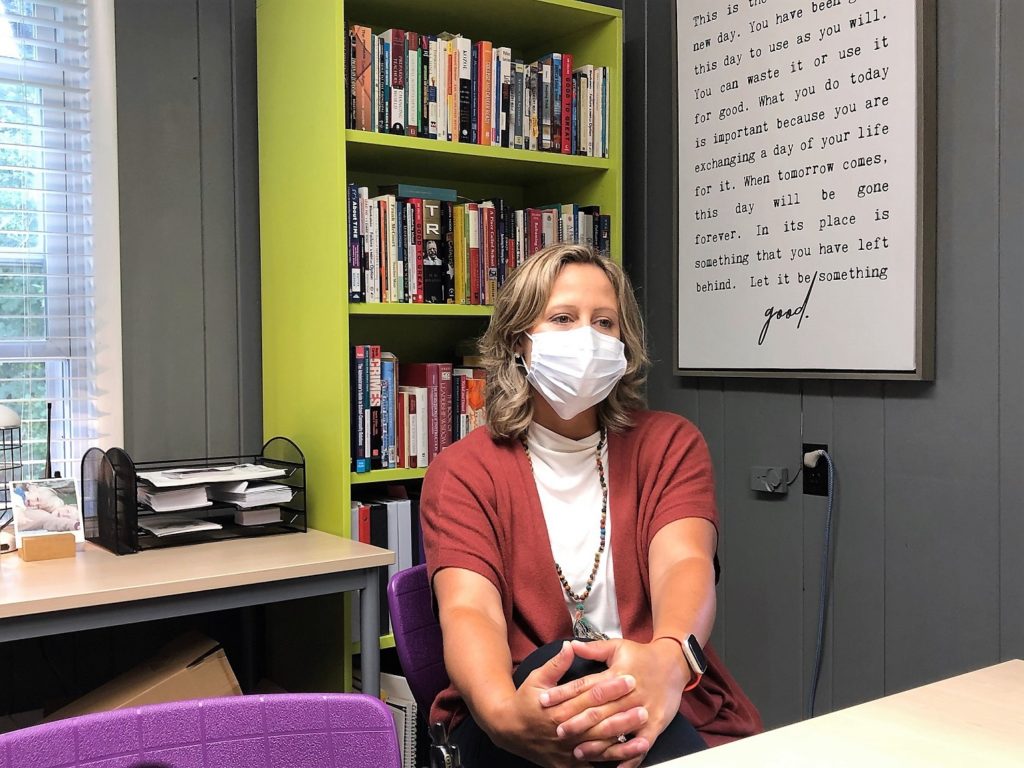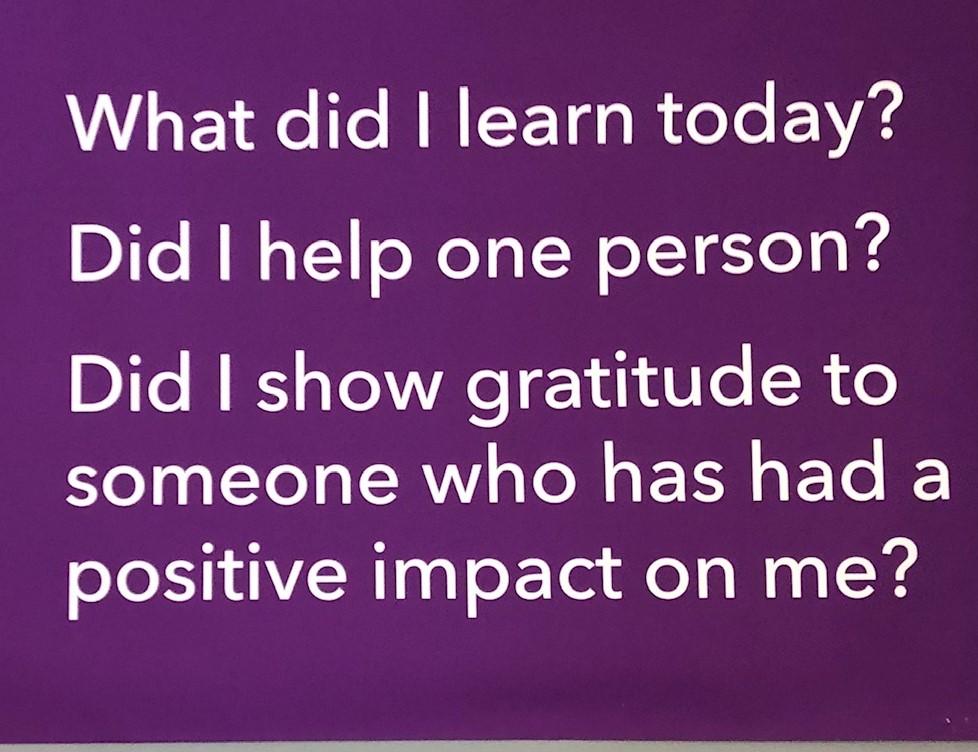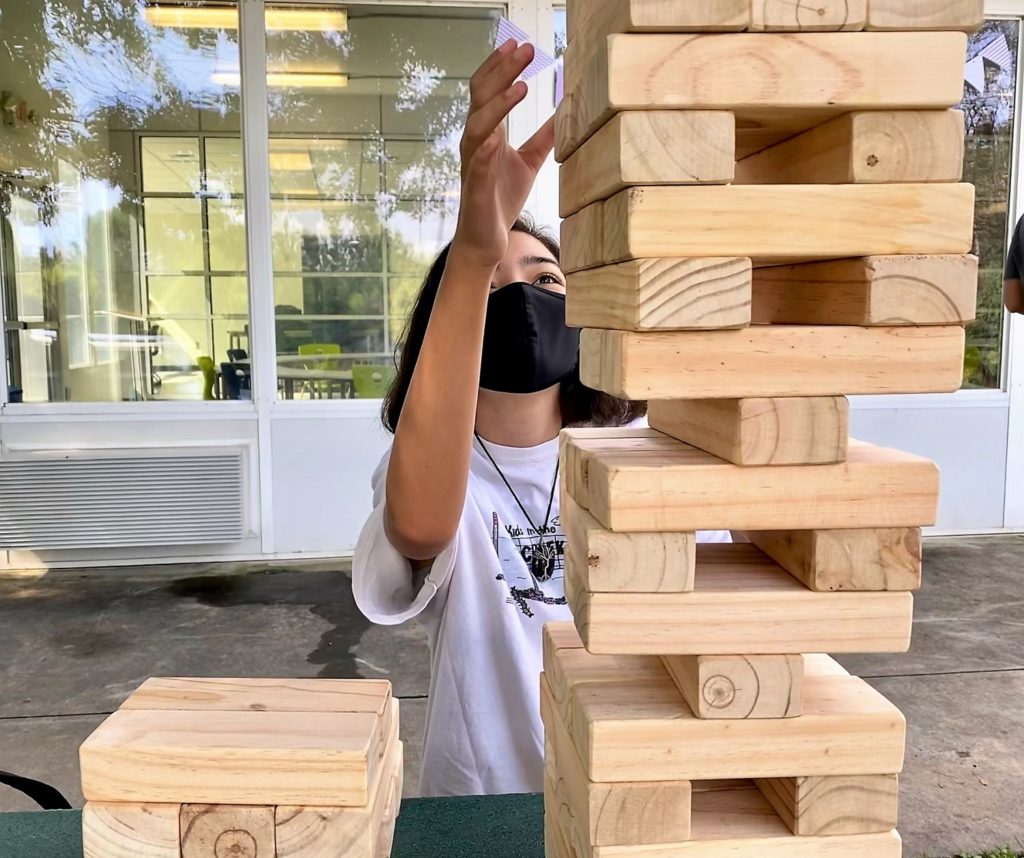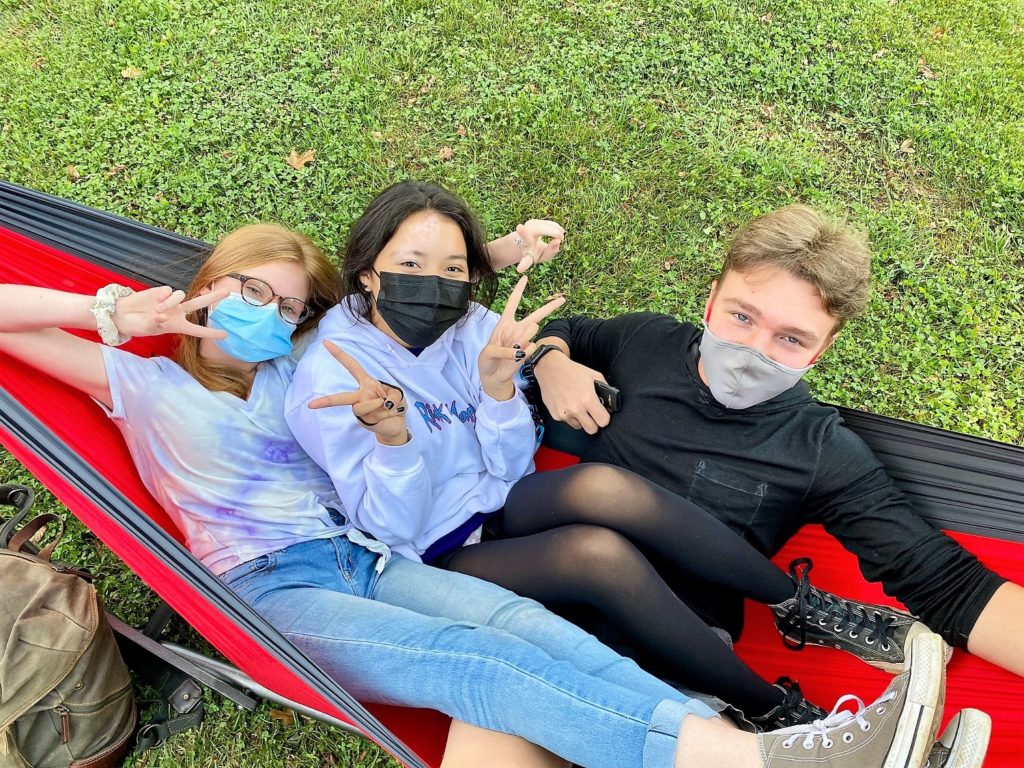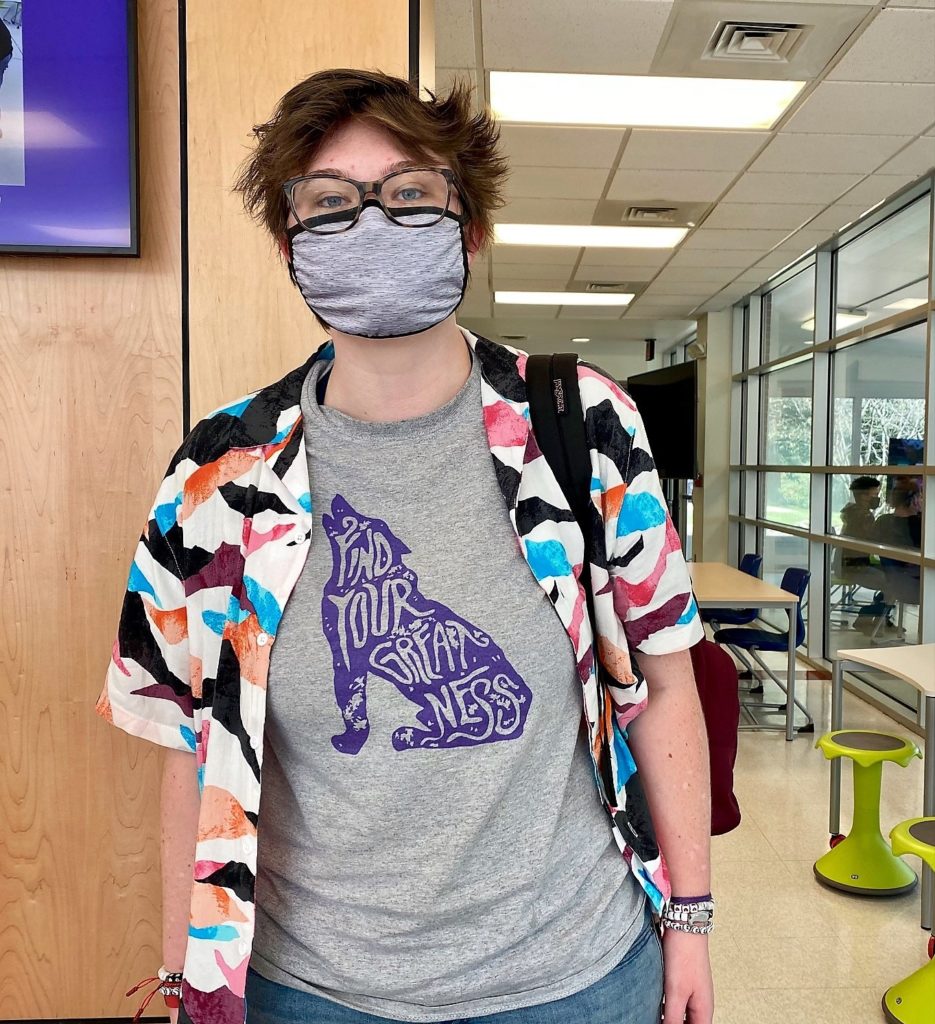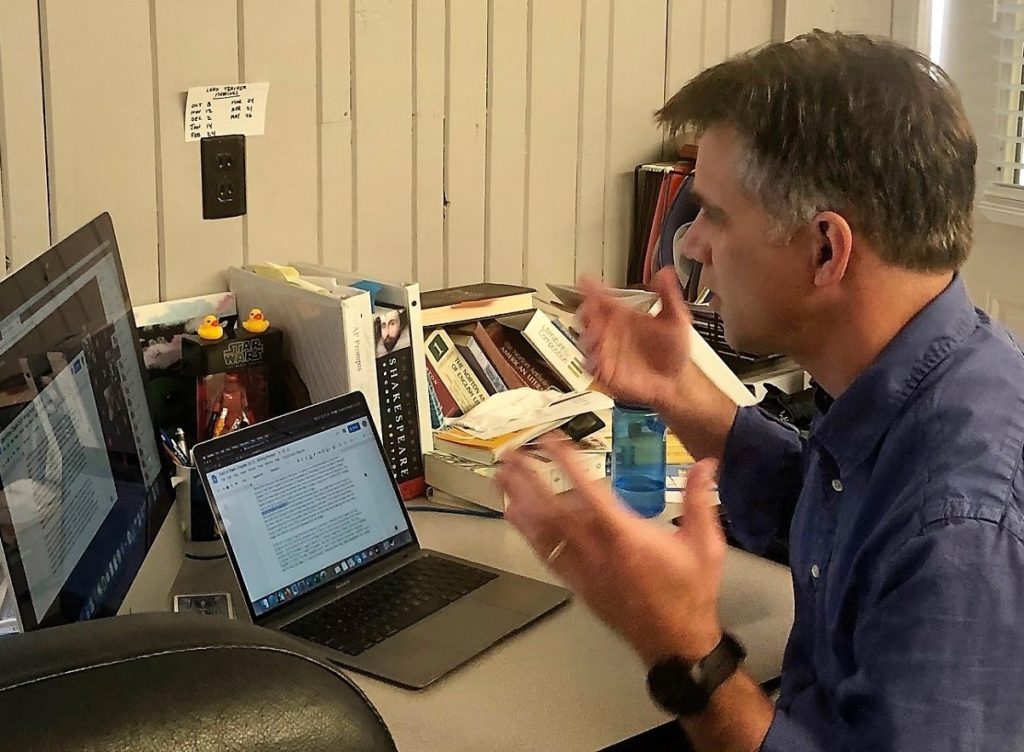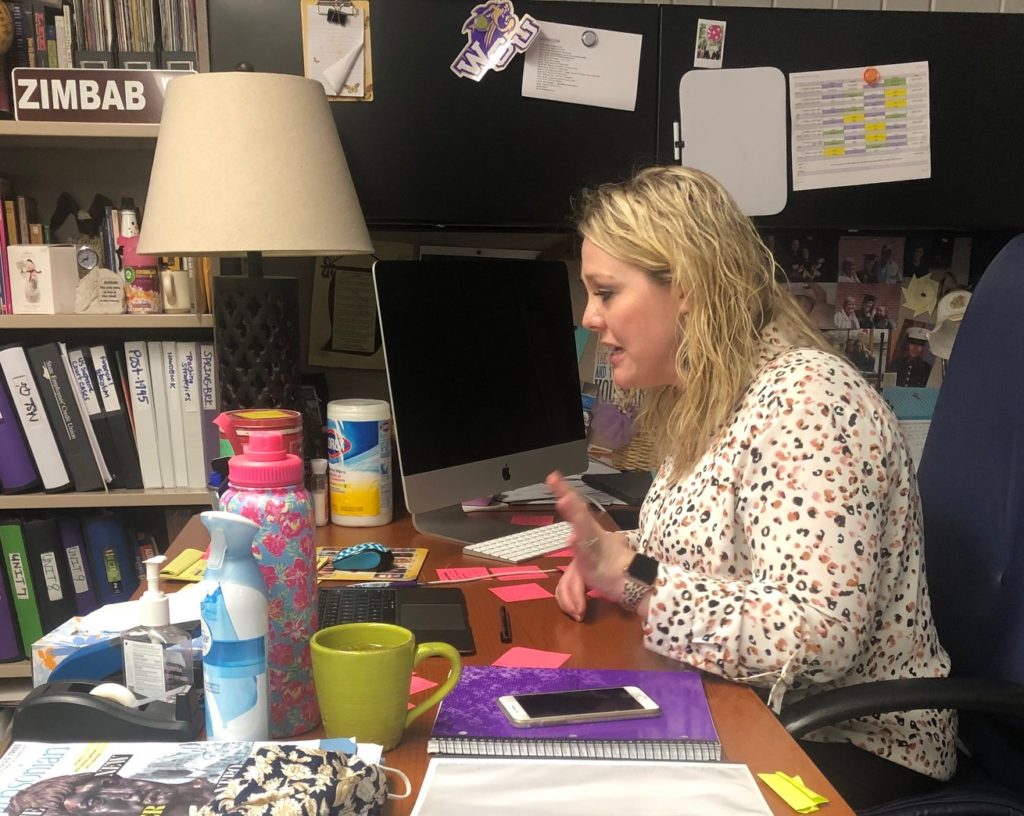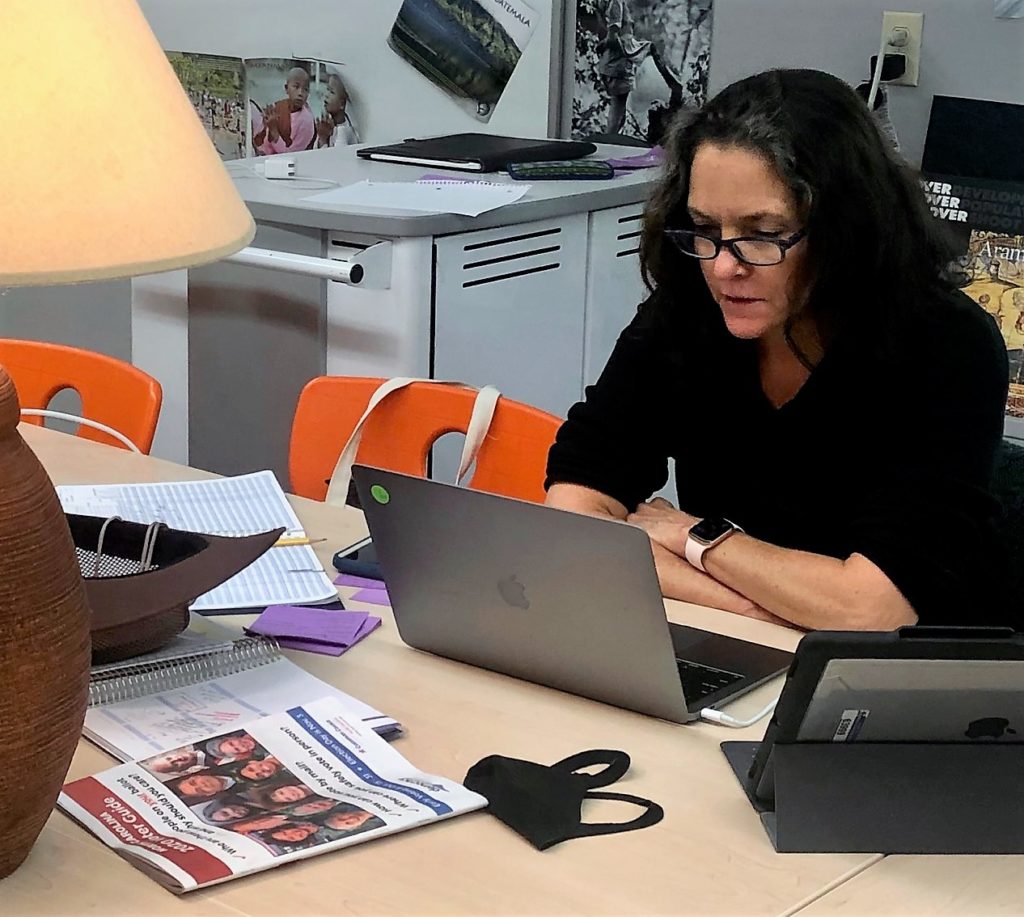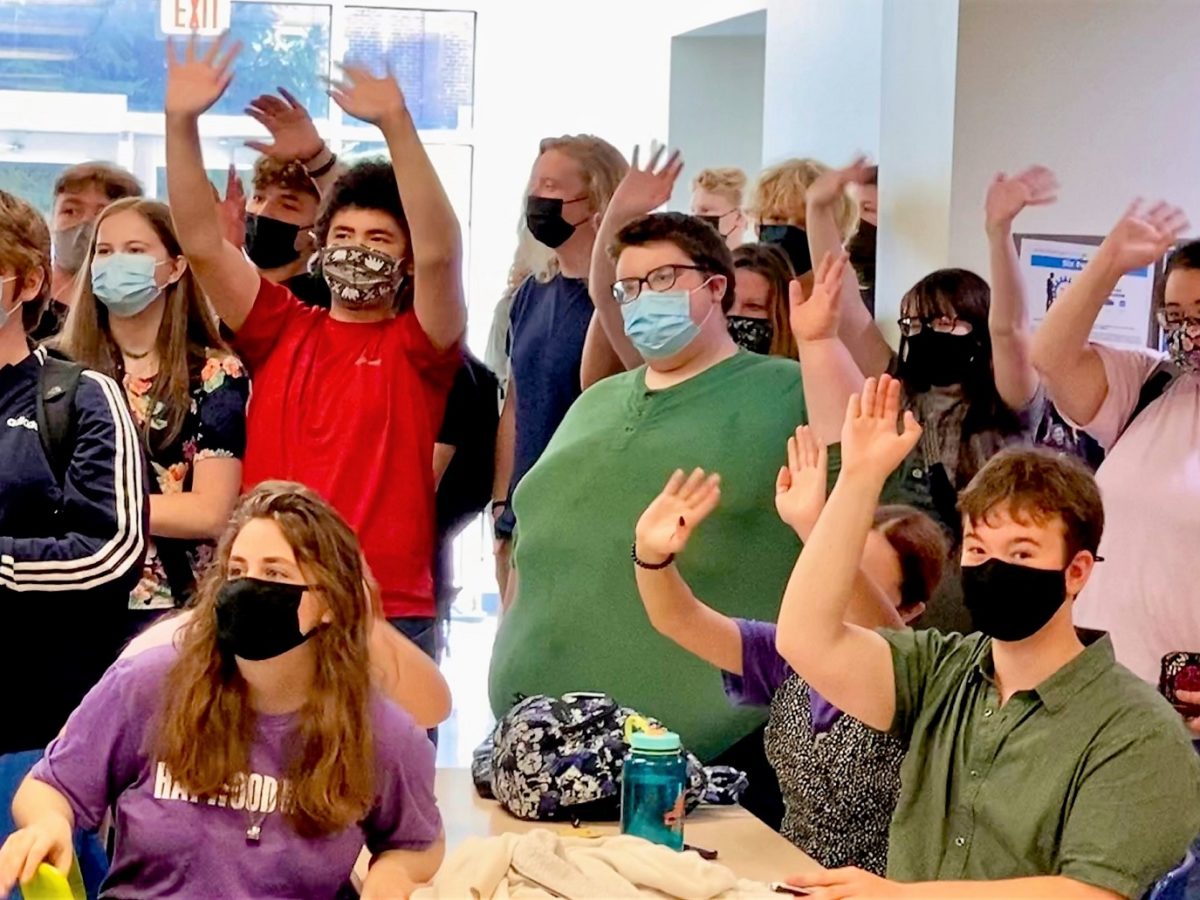
Apple has named an early college in western North Carolina an Apple Distinguished School. And while that is big news, the school’s overall proficiency last year during the pandemic was 98.7%, and for the students and faculty who worked together to pull that off, well, that’s big news too.
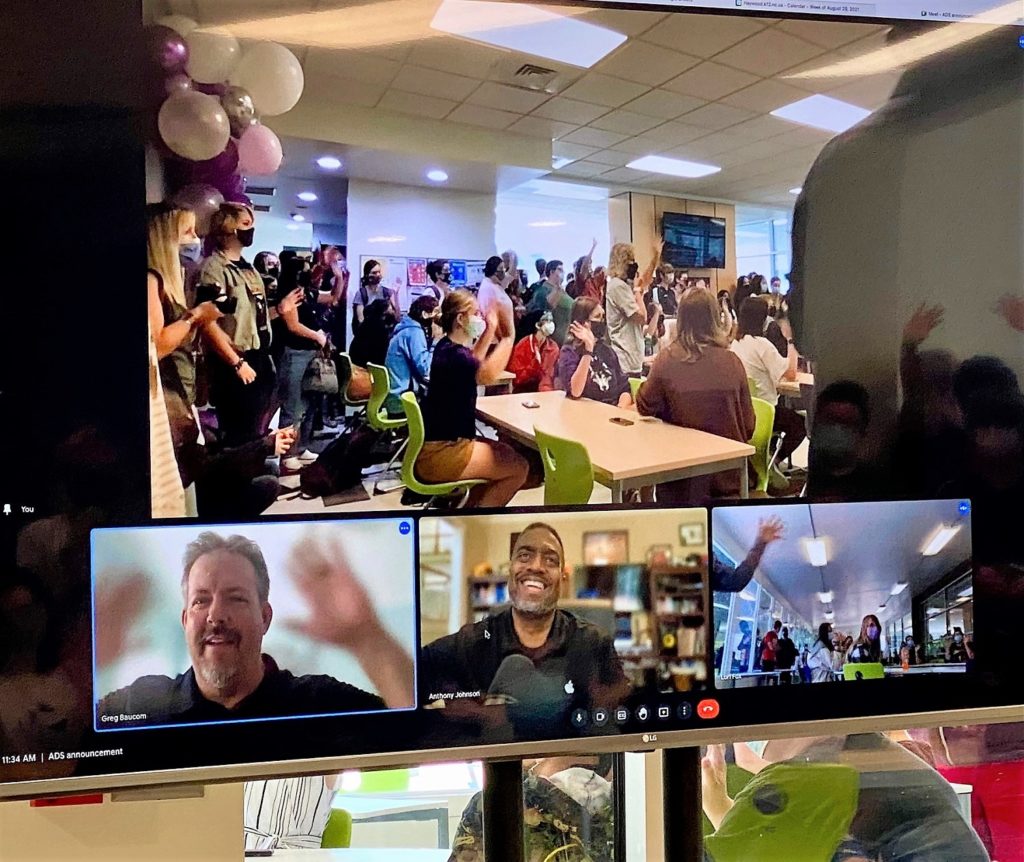
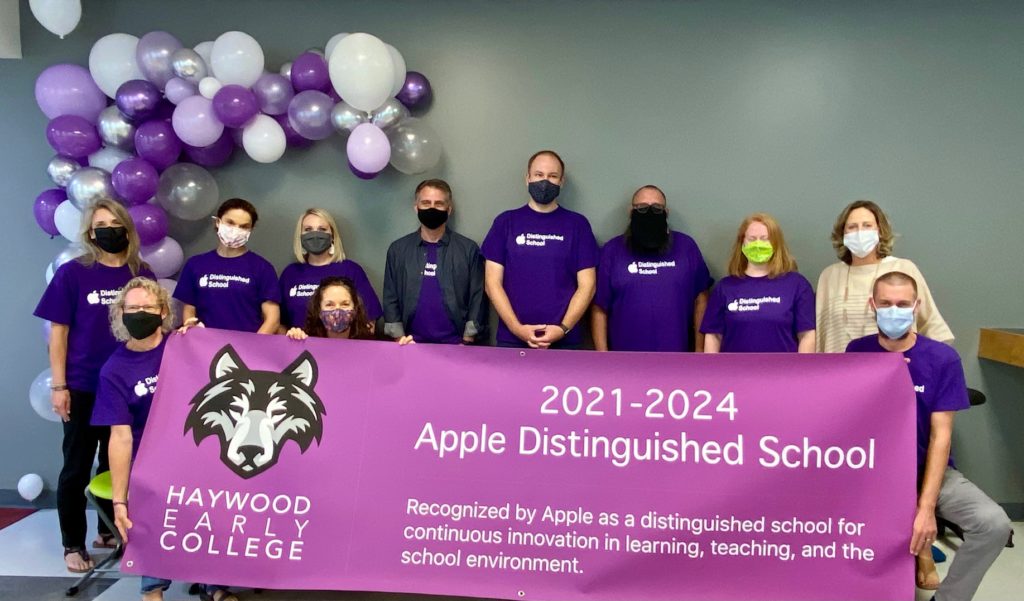
There are 546 Apple Distinguished Schools in 32 countries. Today, Haywood Early College made the invitation-only list. Only three other schools in North Carolina have ever made the list: the Asheville School, North Rowan High School, and the Fletcher School in Charlotte.
“Apple Distinguished Schools are centers of leadership and educational excellence that demonstrate Apple’s vision for learning with technology — and we believe they are some of the most innovative schools in the world,” says the website.
Lori Fox, the 2021 North Carolina Principal of the Year for the National Association of Secondary School Principals, has been the principal of Haywood Early College since 2017. She had never been a principal before.

Haywood Early College 
Principal Lori Fox 
School culture
Fox is thoughtful and intentional about how Apple technology is integrated into student learning.
“We envisioned and implemented an Apple technology initiative that revolutionized learning for our teachers and students. To nurture innovative world-changers, our students must be fully invested and engaged in learning. This level of engagement requires outlets for creativity and the freedom to explore classroom content in unconventional ways. The array of applications and technologies available to our students and faculty has allowed us to create student-driven learning environments that promote student investment through choice and creativity.
We believe we are preparing our students to be thinkers, designers, and communicators on the world stage. Students build traditional reading, writing, and problem-solving skills in fresh ways for topics that they choose using whatever tools work best for their needs, in the style of true innovators. As a result of this initiative, Haywood Early College has risen to new heights academically, increasing every accountability model measure and exceeding growth each year.”
Principal Lori Fox
What leadership looks like during a pandemic
“We are going to refocus, reset, recreate, and restart as many times as needed to get this right for students given whatever comes our way – pandemics, cyberattacks, floods.”
Principal Lori Fox
Fox first emailed me back on April 7, 2020, just weeks after the pandemic upended education across North Carolina. Recently named western region principal of the year, she seemed interested in principal voice, remote learning, and change management.
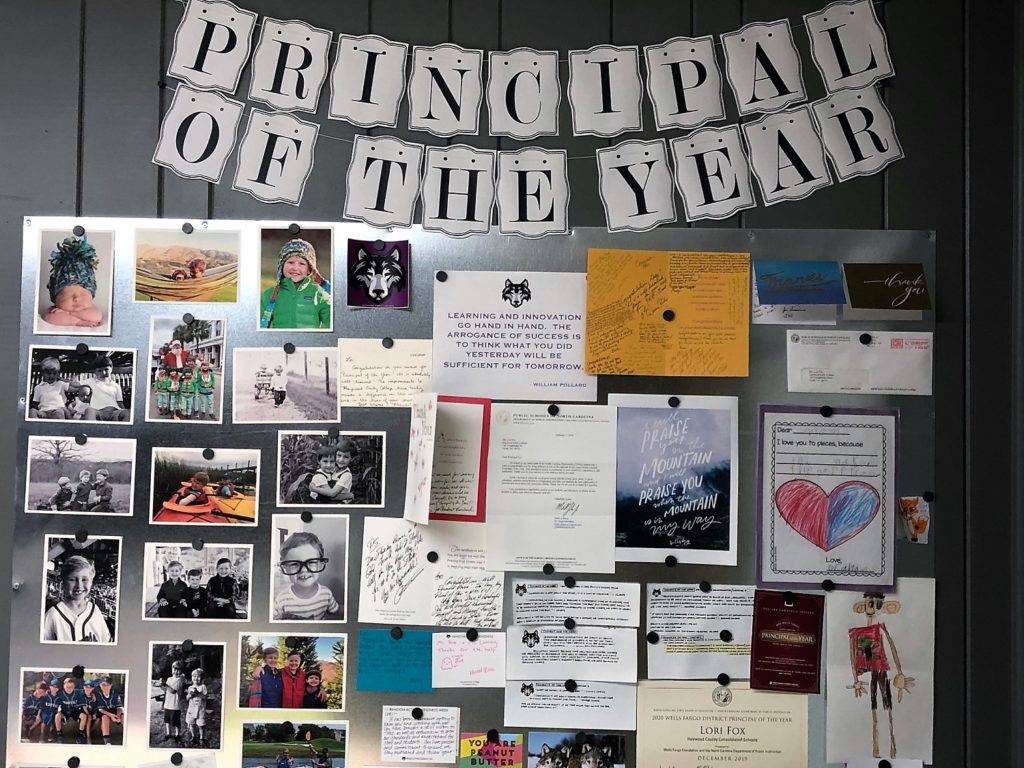
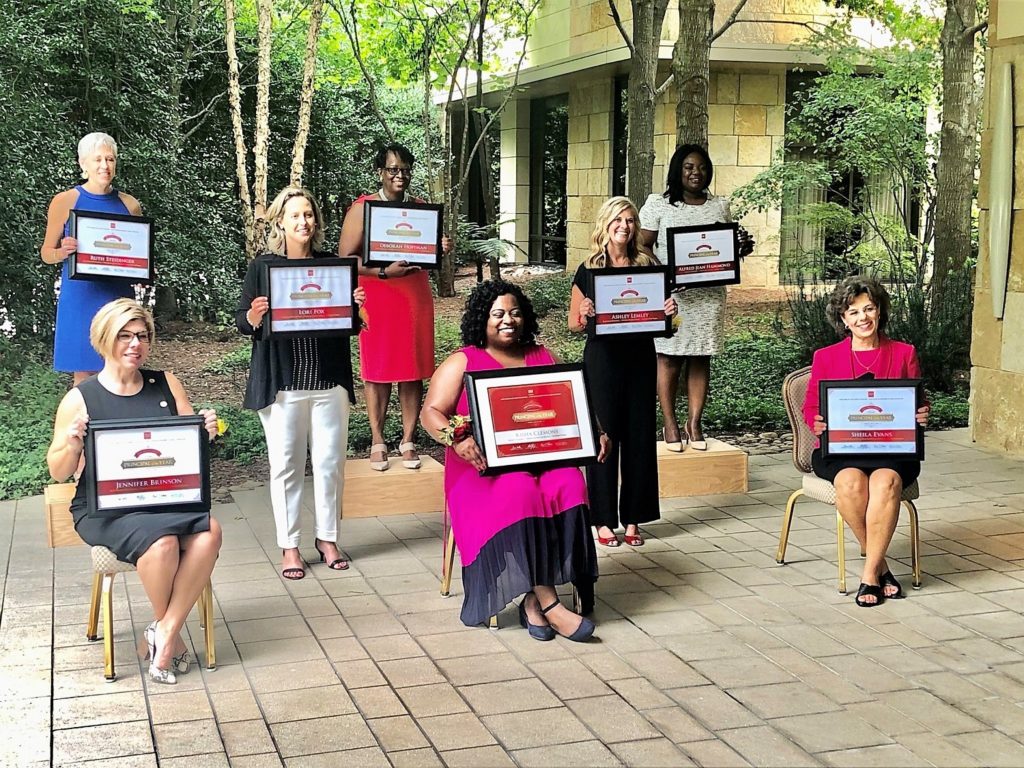
We met via Zoom in May 2020. Later in the summer, I joined a call with the other regional principals of the year. On Aug. 25, we met for the first time in person at Haywood Early College, the day after a ransomware attack. I had lunch with her faculty at the picnic tables in front of the school on Oct. 15. Most recently, we met just after the floods in Haywood County on Aug. 19, 2021.
During these meetings over the last year and a half, I learned Fox is deeply curious about anything and everything that might make her better able to serve her students and faculty.
Fox lives on the same farm she grew up on in Haywood County. Her dad, Danny Miller, was a lifelong educator, starting as a teacher and coach and then becoming a principal.
“I really saw the day in and the day out,” said Fox, “what a principal looks like at home, the time spent, and just really admired that. For a long, long time, I didn’t want to live in anyone’s footsteps or be overshadowed, but I think this is just a calling.”
Fox’s first position as an assistant principal in 2012 was at Pisgah High School, where her parents graduated, where she graduated, and where her father served as principal for a decade.
“In some ways, I was scared to death to be with teachers who taught me,” Fox said, adding that it was “just a very special beginning to an administrative career.”
She became principal of Haywood Early College in 2017. She said faculty members were willing to “lock arms” with her. She believes leadership is about people and relationships, and that “change moves at the speed of trust.”
She said the culture of the school under their collective leadership came together in a hurry, and already-high student performance increased by more than 10 points.
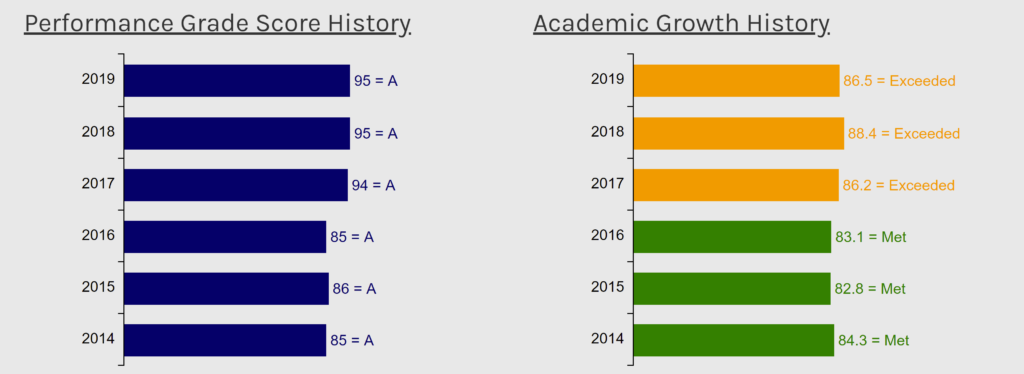
“We take care of kids. We nurture them. We teach them. We challenge them. We love them. Our data takes care of itself.”
Principal Lori Fox
The data may take care of itself, but I will note that her office doesn’t look like any other principal’s office I have ever been in. To start, there is no desk — and that’s on purpose. “I want to be at the table,” she said, “in a chair, just like everyone else.”
There is also a great big white board that shows how she aligns spending with student outcomes. “This is my board to keep pushing in the right direction,” she said.
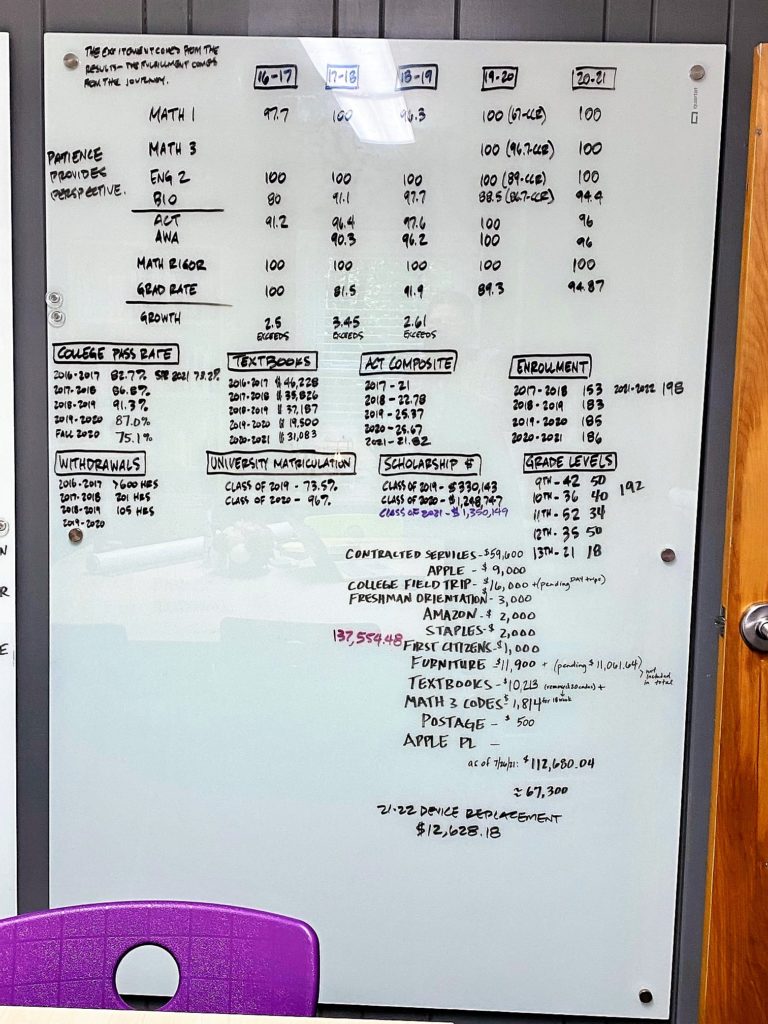
In year two of her leadership, the school was designated a National Blue Ribbon School (see the narrative from the application below).
There are 198 students in the early college. “We turn away 40-50% of every incoming class,” said Fox, noting in large part that’s because the size of the building limits enrollment.
All of the high school classes are honors classes, and there are no more than 15 students in each class. Students start taking classes at Haywood Community College in ninth grade, and most graduate from high school and earn an associate degree in arts, sciences, or engineering in four years. The student body is predominantly white, about half qualify for free and reduced price lunch, and they come from the district’s middle schools, a charter school, private schools, and homeschools.
In the days after the recent flooding in western North Carolina, when Fox was still trying to track down two families, she said, “We encompass the whole district. We are not in one community. We are spread out everywhere.”
Fox knows her students. She works breakfast each morning and teaches freshman seminar. She’s involved in conversations that happen every semester with each student about their future.
Thinking again about her dad and her decision to follow in his footsteps after all, she said, “Being a principal is not your profession. It’s just who you are.”
Instructional leadership during a pandemic
While the pass rate for college courses and ACT Composite went down during COVID after steadily increasing under Fox’s leadership, academic proficiency continued to increase — at 98.7% it’s in the top 10 statewide.
In addition to test scores, the graduating students earned $1,350,149 in scholarships — that’s up from $330,143 for the class of 2019.
How did they do it?
It’s the synergy of Fox’s leadership; an experienced, dedicated faculty; technology already integrated into instructional practice; implementing school-day structure even when virtual; having even higher expectations for kids when they are virtual; and teaching students who want to be students how to be students.
Haywood Early College has a small faculty with no turnover year-to-year except for retirements. Fox said, “We are humans first. We encourage each other to be parents. Some of us are caretakers.” She said the close-knit faculty creates an environment where they can lean in and support each other, and they can challenge each other. They have common planning time and usually eat lunch together.
Long before the pandemic, the school chose to be 1:1 with Apple iPads and all of the teachers are Apple Teacher certified. Each iPad comes loaded with what Fox calls the “app store.” The apps create an internal ecosystem for learning, she said, and incoming ninth-graders are taught how to use the apps and the device with fidelity.
In March 2020 when the pandemic hit, Fox said, “We were in good shape to transition to remote learning.” Students and faculty were remote for the remainder of that school year, with Fox being the only one in the school building on most days. In spite of challenges with internet access in this mountainous community, Fox said of the students and faculty, “They’re getting it done.”
Fox said she learned, “As long as we have our students and faculty, we can have school anywhere.”
She also said she learned, “We can still grow and stretch. Coming out of this, it’ll be neat to see how much we have changed and how much education has changed and what we can now do that we couldn’t before.”
The next school year kicked off on Aug. 10, 2020. Students remained remote, but much to her relief, faculty were back in the building with Fox. By day three, from 8:30-2:30, students and faculty were engaged in full instructional days. Fox told the students, “Treat it like a normal school day. Wake up. Take a shower. Eat breakfast.” And then they were off and learning.
When I met with the faculty, they highlighted the need for classes to meet virtually on the same schedule as if in person. They had noticed at the start of the pandemic that it was easier for students to be silent and harder to build trust in virtual environments. So when they came back to school in fall 2020, they required the students to show their faces in the virtual classes and used smaller breakout rooms to make sure the students got to know each other. Instruction was designed to foster student engagement and leadership.

Doug Hanson 
DJ Kerby 
Caroline Bethea-Brown
Beth Hooper teaches English, and she noticed unexpected avenues of communication that opened up online. Students would message her during class, and she said, “it was like a whisper in the ear.”
Doug Hanson also teaches English, and he tied these virtual instructional practices to expectations of students. “All of us made a very conscious decision at the beginning of the year to make sure that our standards were at least as high as they’ve previously been,” he said. “Students need to know that the rigor is constantly going to be there, and the expectations are going to be there. They’ve got to show up every day because every day we’re doing something meaningful.”
Fox was a co-teacher in all classes so she could jump in and observe the instruction.
The faculty also worked with Fox to keep students engaged non-instructionally. There was an in-person freshman orientation and then they met with the freshmen in three different groups in what Fox thought of as a year-long orientation. They met with the graduating class every Friday to check in on things like FAFSA and college applications. The school set up a Friday speaker series and virtual meetings with universities. Teachers met with students in person for walks on the community college campus, and clubs also brought students together in person.
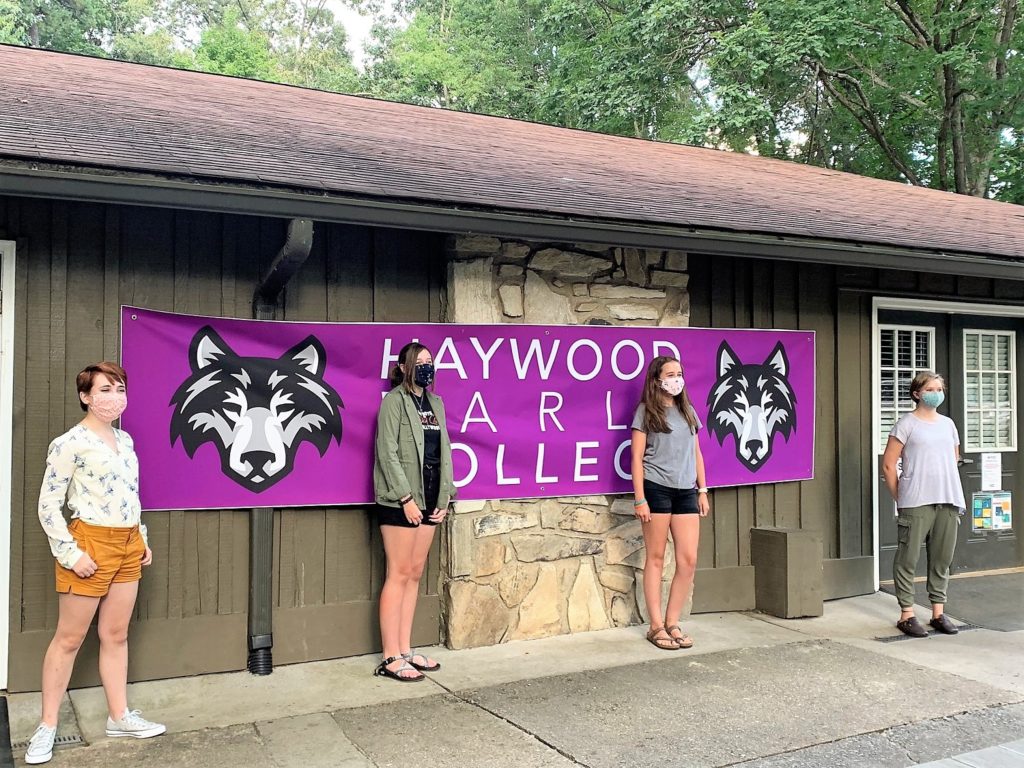
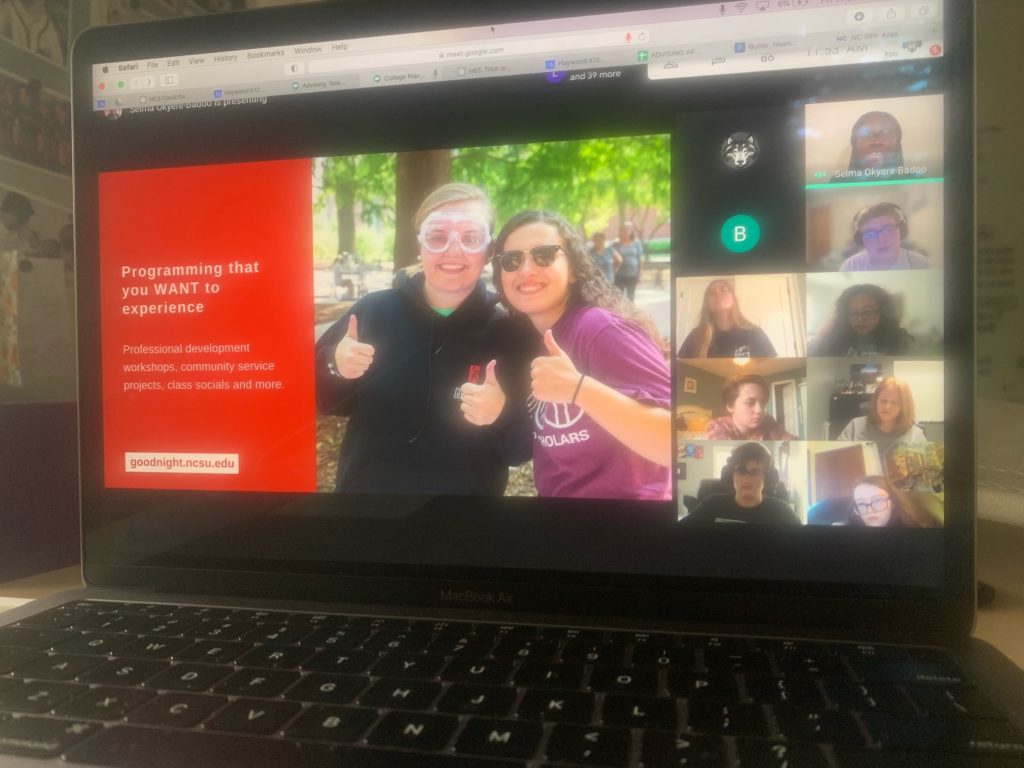
In January 2021, students were allowed back in the building, but 50% chose to remain remote. “We could still thrive in that environment because of strong remote learning,” said Fox.
When she thinks about last year, Fox said, “We can’t lower expectations, so it required a special combination of loving people and cultivating hope along with hard work and fortitude and resilience.”
This school year, everyone is back on campus, and there is no remote option. But as students are quarantined, they will participate just as they did before, synchronously through Google Classrooms. She doesn’t want students missing seat time.
Fox hearkens Winston Churchill and his quote “never let a good crisis go to waste,” commenting, “I can’t say this is a good crisis, but I don’t think we’re letting it go to waste.”
“Congrats, Haywood, you’ve earned it,” said Anthony Johnson with Apple.
Editor’s Note: Here is the narrative from the application to be a National Blue Ribbon School in 2018. It’s a bit dated so I updated a few things, but in many ways this is the story of Fox’s leadership and the school:
They say not to judge a book by its cover.
The mundanely named 400-building, home of Haywood Early College, has the distinction of being the oldest building on campus. Its walls, an eclectic mix of original tongue-and-groove wood paneling, modern drywall, and, in some cases, synthetic composite, show decades of wear. The classrooms those retrofitted walls enclose are cramped, the by-product of trying to fit too much into too little space. The water-stained ceilings, mismatched furniture, and worn industrial tile speak of an old, tired building.
Look inside.
Despite these modest accommodations, there is nowhere else the faculty and staff would want to be. There has not been a single instance of turnover among the teaching faculty and our school counselor in the last five years, and that was when a mathematics teacher moved to the building next door to teach at the community college.
It is the students, of course, that keep everyone here. In many ways they resemble this Appalachian county in North Carolina as a whole: overwhelmingly white, rural, of modest incomes. Yet these students have chosen an untraditional path by choosing Haywood Early College, and they are united by that choice. The students have, of their own volition, volunteered to lead study groups to help others and founded a mentor program to guide the younger students. Students advocated for the creation of our various clubs and organizations. In a world so often marked by strife, their kindness to each other and acceptance of each other is humbling. There has not been a fight in the memory of the school. They could teach adults a thing or two.
It has all happened so fast. Our school itself is just over a decade old. Few knew what to make of it when it began and misinformation was common. Some thought we just took the smart kids (due to the college bit of our name, no doubt), while many did not even know we existed. In fact, Haywood Early College was formed to serve a particular at-risk population of the county: first generation college students of families with modest household incomes, and, at just under half, we still exceed the traditional high schools in the county in the percentage of economically disadvantaged students.
Until recently we had few enough applications that denials were rare. These days though the word is out. We have had numerous state-level recognitions: as a school of distinction and as a school of excellence, a school report card of an A and a school that has exceeded expected growth. One of our students was recently awarded the UNC-Chapel Hill Morehead-Cain scholarship, the first time in nearly three decades any county student has done so. In the last graduating class, nearly one in six attended college with some sort of full-ride scholarship or assistance.
We have a close partnership with Haywood Community College that allows our students greater flexibility in picking among rigorous classes that speak to them. From classes on music appreciation to digital photography, from the Old Testament to psychology, our students can choose from a wide range of options that involve an in-the-flesh instructor and fellow students. In a time where such flexibility usually comes at the price of online classes, we are pleased we can offer classes where they can meet their teachers face-to-face, and develop strong and meaningful partnerships with them.
And so our county is waking up to this incredible resource that is there for them. Applications are booming as the people of Haywood County have now realized all we have to offer: small class sizes that offer instruction tailored to each student, teachers who eschew standard lesson templates in favor of innovation, layered support for each student ranging from peer study groups to one-on-one teacher-student sessions to institutional support from the community college.
Yet this still leaves something out. Our students feel valued, by their teachers, by each other, in ways that are hard to explain. How about this: our largest club is drama, and when they meet, stuffed into a small room, there is something thrillingly joyous about their boisterous clamor. Or this: our counselor’s office buzzes with omnipresent students who find pleasure in a sympathetic ear, a comfortable chair, good advice. Or this: that for a charity 5k, staff and students turn out the largest group from any organization. Or finally: the way our students feel comfortable being themselves and expressing their own particular identity, without fear of ridicule or rejection. The estrangement, the alienation, that seems such a fixed part of the high school experience, has been kept at bay. So this is Haywood Early College: rigorous and innovative instruction, an experienced and committed staff, an appreciative and enthusiastic community, kind and united students. In a building the school has outgrown.
Come. Look inside.
Recommended reading
